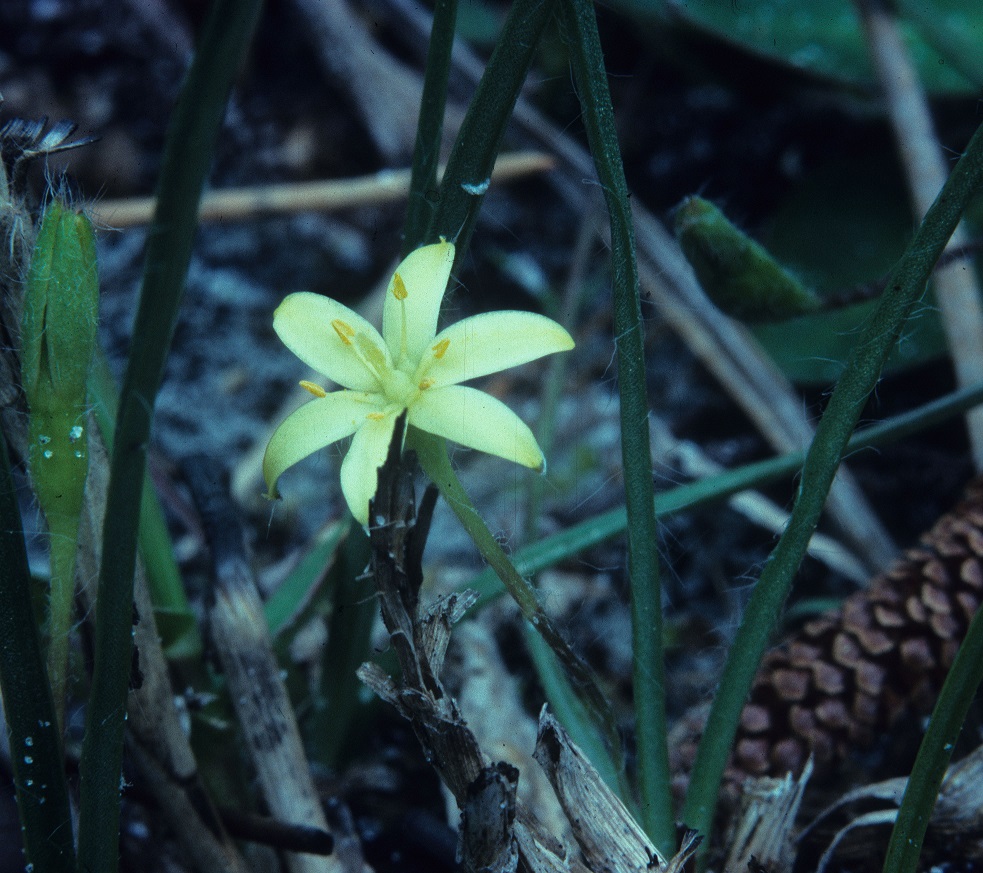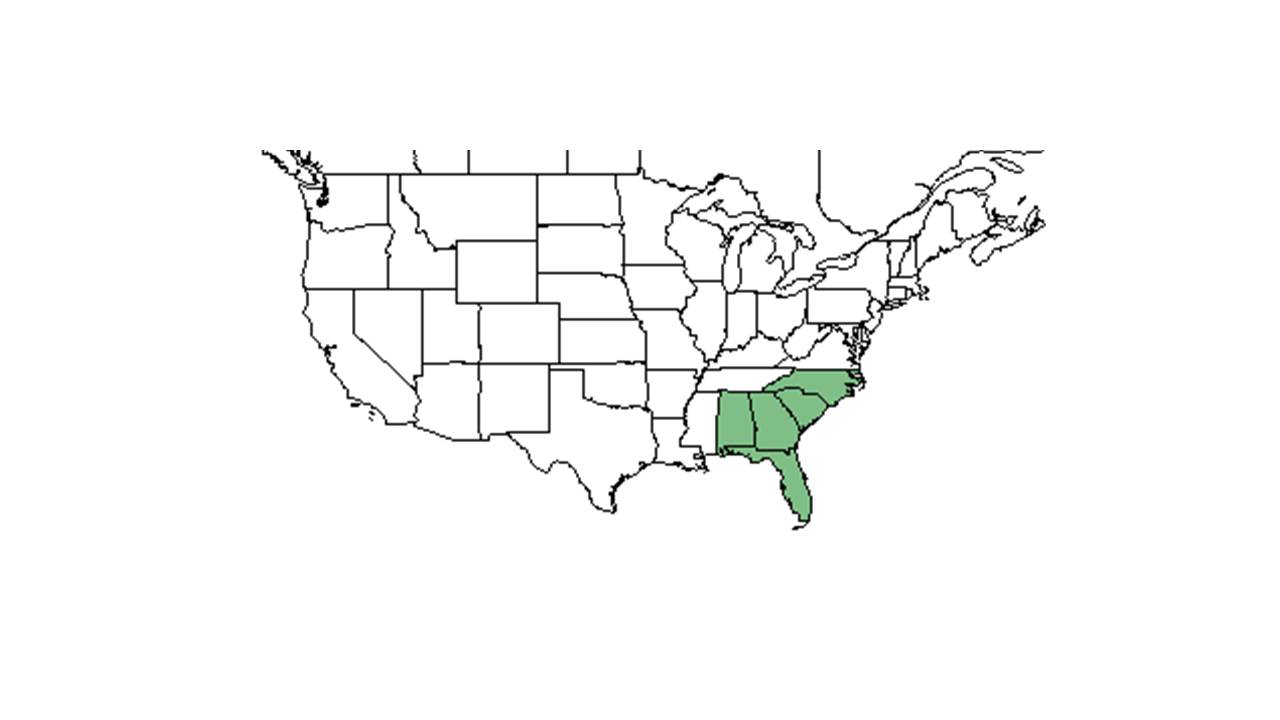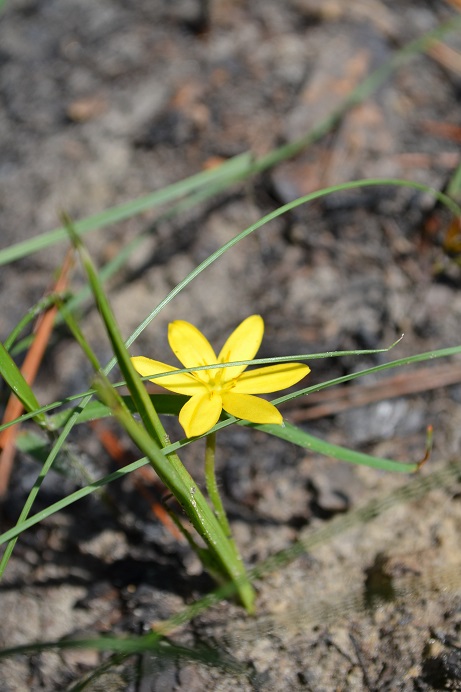Difference between revisions of "Hypoxis juncea"
| Line 29: | Line 29: | ||
==Ecology== | ==Ecology== | ||
===Habitat=== <!--Natural communities, human disturbed habitats, topography, hydrology, soils, light, fire regime requirements for removal of competition, etc.--> | ===Habitat=== <!--Natural communities, human disturbed habitats, topography, hydrology, soils, light, fire regime requirements for removal of competition, etc.--> | ||
| − | It is a longleaf pine flatwoods/ sandhill species.<ref name="Glitzenstein et al 2003">Glitzenstein, J. S., D. R. Streng, et al. (2003). "Fire frequency effects on longleaf pine (Pinus palustris, P.Miller) vegetation in South Carolina and northeast Florida, USA." Natural Areas Journal 23: 22-37.</ref> However, it can also occur in disturbed areas, including grassy roadsides. <ref name="FSU Herbarium">Florida State University Robert K. Godfrey Herbarium database. URL: [http://herbarium.bio.fsu.edu http://herbarium.bio.fsu.edu]. Last accessed: June 2014. Collectors: Loran C. Anderson, Karen MacClendon, R. Komarek, and Annie Schmidt. States and Counties: Florida: Calhoun, Jefferson, Liberty, and Wakulla. Georgia: Thomas.</ref> It prefers open, moist conditions in sandy or loamy soils. <ref name="FSU Herbarium"/> Associated species include ''Pinus palutris, Pinus elliottii,'' and ''Quercus laevis''. <ref name="FSU Herbarium"/> | + | It is a longleaf pine flatwoods/ sandhill species.<ref name="Glitzenstein et al 2003">Glitzenstein, J. S., D. R. Streng, et al. (2003). "Fire frequency effects on longleaf pine (Pinus palustris, P.Miller) vegetation in South Carolina and northeast Florida, USA." Natural Areas Journal 23: 22-37.</ref> Generally, ''Hypoxis juncea'' is found in wet pine savanna communities.<ref name= "Weakley">Weakley, A. S. (2015). Flora of the Southern and Mid-Atlantic States. Chapel Hill, NC, University of North Carolina Herbarium.</ref> However, it can also occur in disturbed areas, including grassy roadsides. <ref name="FSU Herbarium">Florida State University Robert K. Godfrey Herbarium database. URL: [http://herbarium.bio.fsu.edu http://herbarium.bio.fsu.edu]. Last accessed: June 2014. Collectors: Loran C. Anderson, Karen MacClendon, R. Komarek, and Annie Schmidt. States and Counties: Florida: Calhoun, Jefferson, Liberty, and Wakulla. Georgia: Thomas.</ref> It prefers open, moist conditions in sandy or loamy soils. <ref name="FSU Herbarium"/> Associated species include ''Pinus palutris, Pinus elliottii,'' and ''Quercus laevis''. <ref name="FSU Herbarium"/> |
===Phenology=== <!--Timing off flowering, fruiting, seed dispersal, and environmental triggers. Cite PanFlora website if appropriate: http://www.gilnelson.com/PanFlora/ --> | ===Phenology=== <!--Timing off flowering, fruiting, seed dispersal, and environmental triggers. Cite PanFlora website if appropriate: http://www.gilnelson.com/PanFlora/ --> | ||
Revision as of 15:52, 30 May 2019
| Hypoxis juncea | |
|---|---|

| |
| Photo taken by Gil Nelson | |
| Scientific classification | |
| Kingdom: | Plantae |
| Division: | Magnoliophyta - Flowering plants |
| Class: | Liliopsida – Monocotyledons |
| Order: | Liliales |
| Family: | Liliaceae |
| Genus: | Hypoxis |
| Species: | H. juncea |
| Binomial name | |
| Hypoxis juncea Sm. | |

| |
| Natural range of Hypoxis juncea from USDA NRCS Plants Database. | |
Common name: Fringed yellow star-grass
Contents
Taxonomic notes
Description
A description of Hypoxis juncea is provided in The Flora of North America. Hypoxis juncea is a perennial herbaceous species.
Distribution
Ecology
Habitat
It is a longleaf pine flatwoods/ sandhill species.[1] Generally, Hypoxis juncea is found in wet pine savanna communities.[2] However, it can also occur in disturbed areas, including grassy roadsides. [3] It prefers open, moist conditions in sandy or loamy soils. [3] Associated species include Pinus palutris, Pinus elliottii, and Quercus laevis. [3]
Phenology
H. juncea has been observed flowering from February through June and in September with peak inflorescence in March.[4][3] Fruiting was observed in March through June. [3] Kevin Robertson has observed this species flower within three months of burning. KMR
Fire ecology
This species has been found in habitat that is maintained by frequent fire. [3] H. juncea appeared to have benefited from high fire frequencies in a study in 2003.[1] Observed H. juncea respouting at least 10 days after a fire that occurred in June of 1993.[5]
Pollination
The following Hymenoptera families and species were observed visiting flowers of Hypoxis juncea at Archbold Biological Station: [6]
Halictidae: Augochlorella gratiosa, Lasioglossum nymphalis
Use by animals
Deyrup observed this bee, Dialictus nymnphalis, on H. juncea.[7] “…Hypoxis is one of the most important plants for quail, which occurred (resprouted) in the ranking only the first 1 or 2 months after fire.[8]
Conservation and management
Cultivation and restoration
Photo Gallery
References and notes
- ↑ 1.0 1.1 Glitzenstein, J. S., D. R. Streng, et al. (2003). "Fire frequency effects on longleaf pine (Pinus palustris, P.Miller) vegetation in South Carolina and northeast Florida, USA." Natural Areas Journal 23: 22-37.
- ↑ Weakley, A. S. (2015). Flora of the Southern and Mid-Atlantic States. Chapel Hill, NC, University of North Carolina Herbarium.
- ↑ 3.0 3.1 3.2 3.3 3.4 3.5 Florida State University Robert K. Godfrey Herbarium database. URL: http://herbarium.bio.fsu.edu. Last accessed: June 2014. Collectors: Loran C. Anderson, Karen MacClendon, R. Komarek, and Annie Schmidt. States and Counties: Florida: Calhoun, Jefferson, Liberty, and Wakulla. Georgia: Thomas.
- ↑ Nelson, G. PanFlora: Plant data for the eastern United States with emphasis on the Southeastern Coastal Plains, Florida, and the Florida Panhandle. www.gilnelson.com/PanFlora/ Accessed: 12 DEC 2016
- ↑ Pavon, M. L. (1995). Diversity and response of ground cover arthropod communities to different seasonal burns in longleaf pine forests. Tallahassee, Florida A&M University.
- ↑ Deyrup, M.A. and N.D. 2015. Database of observations of Hymenoptera visitations to flowers of plants on Archbold Biological Station, Florida, USA.
- ↑ Deyrup, M. J. E., and Beth Norden (2002). "The diversity and floral hosts of bees at the Archbold Biological Station, Florida (Hymenoptera: Apoidea)." Insecta mundi 16(1-3).
- ↑ Hughes, R. H. (1975). The native vegetation in south Florida related to month of burning. Asheville, NC, USDA Forest Service.
